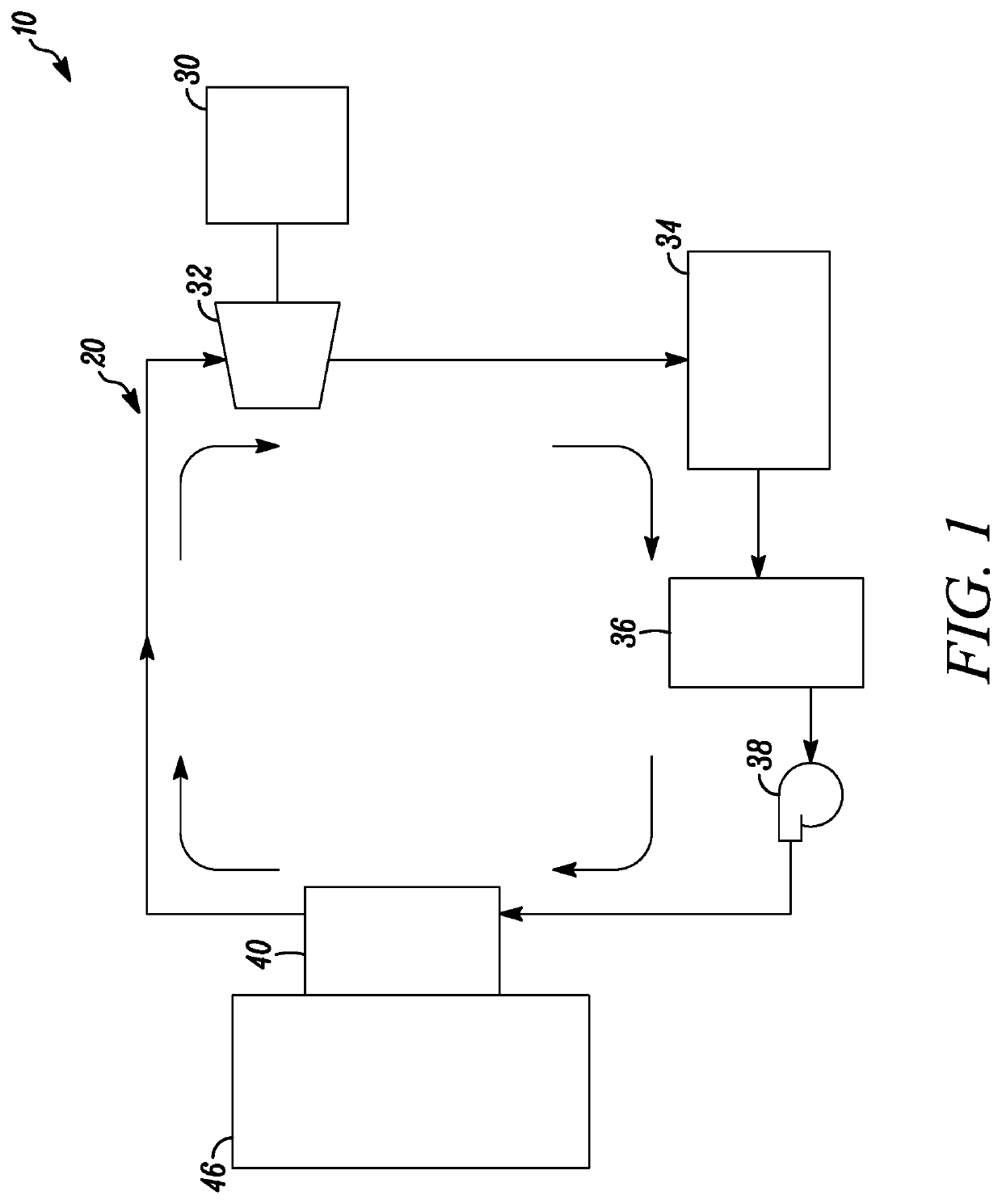Use of perfluoroheptenes in power cycle systems
a technology of perfluoroheptene and power cycle, which is applied in the direction of steam engine plants, machines/engines, mechanical equipment, etc., can solve the problem of limiting the evaporating temperature of the cycle operating, and achieve the effect of reducing gwps, reducing vapor pressure, and high critical temperatur
- Summary
- Abstract
- Description
- Claims
- Application Information
AI Technical Summary
Benefits of technology
Problems solved by technology
Method used
Image
Examples
example 1
[0060]The projected cycle efficiency of an ORC system utilizing HFC-245fa as a working fluid was compared to the projected cycle efficiency of the ORC system utilizing a mixture of 2-perfluoroheptene and 3-perfluoroheptene as a working fluid. It was assumed that the maximum feasible working pressure of the ORC system was about 3 MPa and that a heat source was available that would allow the temperature of either working fluid at the expander inlet to be maintained at 160° C.
[0061]Shown in Table 1 is a comparative table for HFC-245fa and a mixture containing 20% 2-perfluoroheptene and 80% 3-perfluoroheptene (mixture purity: 99.20%) utilized as the working fluid in a subcritical cycle. The operating parameters of the ORC system using HFC-245fa as the working fluid are shown under the column labeled “HFC-245fa”. The operating parameters of the ORC system using the 2-perfluoroheptene / 3-perfluoroheptene mixture as the working fluid are shown under the column labeled “2-Perfluoroheptene / 3-...
example 2
[0067]Shown in Table 2 is a comparative table for a mixture containing 20% 2-perfluoroheptene and 80% 3-perfluoroheptene (mixture purity: 99.20%) utilized as the working fluid in a subcritical cycle and as the working fluid in a transcritical cycle, where the expander inlet temperature is maintained at 220° C.
[0068]
TABLE 2SubcriticalTranscriticalParametersUnitsCycleCycleEvaporator Temp°C.160n / aEvaporator Superheat°K60n / aCondenser Temperature°C.8585Condenser Sub-cooling°K55Expander Efficiency0.750.75Pump Efficiency0.550.55Expander Inlet PressureMPa0.7853Expander Inlet Temperature°C.220220Evaporator PressureMPa0.785n / aCondenser PressureMPa0.1350.135Expansion Ratio5.822.3Expander Exit Temperature°C.200.6158.8Cycle Effie%6.1588.102Cycle Thermal Effic vs Subcritical%—+31.6%CycleCycle CAPkJ / m3160.255187.582Cycle CAP vs Subcritical Cycle%—+17.1%
[0069]The above table indicates that when heat is available at a temperature that allows the expander inlet temperature to be maintained at 220° C....
PUM
 Login to View More
Login to View More Abstract
Description
Claims
Application Information
 Login to View More
Login to View More - R&D
- Intellectual Property
- Life Sciences
- Materials
- Tech Scout
- Unparalleled Data Quality
- Higher Quality Content
- 60% Fewer Hallucinations
Browse by: Latest US Patents, China's latest patents, Technical Efficacy Thesaurus, Application Domain, Technology Topic, Popular Technical Reports.
© 2025 PatSnap. All rights reserved.Legal|Privacy policy|Modern Slavery Act Transparency Statement|Sitemap|About US| Contact US: help@patsnap.com


